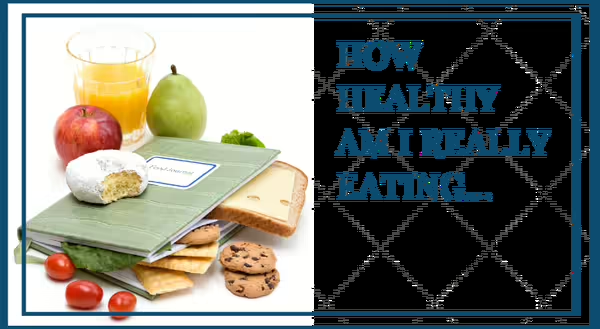
Many of us do not spend much time thinking about our health or our state of wellbeing. Unless, of course, we or someone we care about is dealing with health issues. However, each of us should make health a priority, given the immense impact our health has not only on ourselves but those around us.
Health and wellness is a dynamic concept, influencing every aspect of our lives. It is much more than merely a physical state of health. It is a compilation of our intellectual, social, physical, occupational, emotional, and spiritual health, with each aspect or dimension contributing to our overall quality of life.
As we journey together, we will look at the various dimensions of wellness and how they impact our lives. Today, we will be looking at establishing a healthy eating plan.
Establish a Healthy Eating Plan
Trust me. I understand this is much easier said than done. However, it truly needs to be a priority in your life. And you are never too old or too young, or too overweight or underweight to make changes to your eating habits. You are a valuable person, and you deserve to have a long, healthy, and quality rich life.
Healthy eating will increase the likelihood of you having a healthy life. Researchers have long known, those who consistently eat a healthy, balanced diet have a lower risk of developing obesity, heart disease, type 2 diabetes, and certain cancers. Additionally, if you have a chronic illness, healthy eating will help you manage and prevent complications.
Recognizing your current eating habits and patterns is the first step in improving your everyday eating. It is a well-known fact that many of us have the best intentions for choosing healthy foods. However, convenience, stress, and life frequently get in the way of our best-laid choices.
Increasing your awareness about what you eat, how much, how often, and when you eat will help you gain insight into how your lifestyle impacts your food/beverage choices. This process can be as complicated or as simple as you want. However, the more effort you put into this step, the more success you will have in identifying areas you are already doing well and areas you need to improve.
Before you begin, ask yourself WHY you want to do this and what will you do with this information. It is important to understand what we choose to eat is not just about nourishing our bodies. It is about understanding the connection between our thoughts, emotions, social influences, and our food/beverage choices. As you work to identify your current eating patterns, know this may be hard then you planned. And that is okay. We are all human, which makes us all flawed in many different ways. You may begin this process and have to stop and restart, and this, too, is okay.
Now, begin by establishing a goal for tracking your current eating habits and patterns. Decide how you will do this and for how long.
- Will you document everything you eat for the next three days or a week?
- Will you track your food by using a notebook or an online app?
- Will you track the time of day you eat or just the food/beverages consumed?
- Will you document how much you “think” you consumed or just the type of food/beverage?
- Will you track how you were feeling before or after you consumed your food/beverage?
- Will you document if you ate alone or if you were with others? Or if they influenced your food/beverage choices?
After you determine how and what you will track, you will need to decide what you will do with this information.
Taking time to evaluate what you have learned while tracking your eating patterns will allow you to identify aspects within your eating plan/habits that may be sabotaging your health goals.
Ask yourself these questions as you evaluate your eating habits and patterns.
- Why are you consuming the foods/beverages that you do? Are you eating because you are truly hungry? Or is there some other reason you are selecting the foods/beverages you have chosen?
- Did you plan your meals for the day ahead of time?
- Did you wait until you were overly hungry and then selected the most convenient foods available? Did you overeat because you waited too long to eat?
- Are your meals balanced? Do they include foods from the five food groups?
Only you can answer these questions, and the answers may vary from day-to-day. However, when working to establish a healthy eating plan, you may need to look deeper into other aspects of your life to understand better how they impact your eating patterns/habits.
Source: Diane Reinhold, MPH, MS, RDN is a University of Illinois Extension, Educator, Nutrition and Wellness, serving Jo Daviess, Stephenson & Winnebago Counties
References:
Gavin, M., MD (Ed.). (2018, June). Emotional Eating (for Teens) - Nemours KidsHealth. Retrieved January 18, 2021, from https://kidshealth.org/en/teens/emotional-eating.html
Poor Nutrition. (2021, January 11). Retrieved January 18, 2021, from https://www.cdc.gov/chronicdisease/resources/publications/factsheets/nutrition.htm